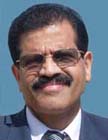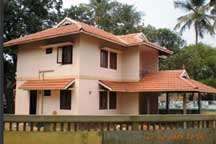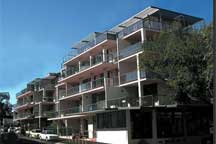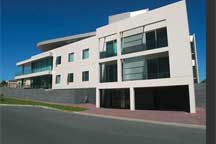|
Construction technique:
Rapidwall technology
Main
Article page |
Beauty articles
|
Health page |
Computers|
Diseases |
Education |
Entertainment |
Family
Business |Fitness|
Fruits and Vegetables
|
Jobs |
General |
Personality|
Technology
|
Tourism |
Sports
House Plans |
House Loans |
Real Estate|
Vaasthu
Shastra|
Construction Tips
Engineering page
| Interior Design |
Property Buying Tips |
Renting Tips |
Journals /
Magazines
Education | List of Colleges |
Entrance
Rapidwall is a single panel walling system that serves as both
the internal and external wall and eliminates the need for bricks, blocks,
timber and steel wall frames and plasterboard linings. It is the most
ecologically sound and technologically advanced building product available in
the world today.
Internationally Recognised
Designed and developed in Australia in the early 1990s, Rapidwall
was awarded the prestigious "2009 Global Gypsum Product of the Year" award and
was recognised as a "Good Practice" by the United Nations Habitat business
awards for sustainable urbanization.
Environmentally Friendly
In a process that will change forever the way buildings are
constructed, Rapidwall takes natural gypsum or by-product, chemical waste gypsum
and turns it into a 12m x 3m glass-fibre gypsum plaster, single panel, load
bearing walling system.
100% Recyclable and water, rot and termite resistant Rapidwall is
the ideal building product for fire, cyclone and earthquake prone regions as
well as for providing housing solutions for impoverished people.
Rapidwall is the lowest energy embodied building product in the
world today and is eligible for Carbon Credits.
Scientifically Tested
In India Rapidwall has been rigorously tested by the University
IIT Madras and certified by Structural Engineering Research Centre (SERC) for
use in the construction of buildings in earthquake prone areas of up to 10
storey’s.
In Australia testing has been undertaken by Adelaide University
and University of South Australia.
In China testing has been undertaken by the University of Hong
Kong and the University of Tianjin, School of Civil Engineering in Shandong and
others.
At the School of Civil Engineering in Shandong, scientific
destruction testing was undertaken on a full scale, five storey Rapidwall
building where a horizontal force of 100 tonnes, simulating a force of 8 on the
Richter scale, was applied. Rapidwall withstood this testing without any visible
signs of cracking.
Sustainable Development
The panels, which are extremely strong yet lightweight, compared
to other building methods, are ideal for a wide range of building applications
from high-rise, residential, commercial and industrial building construction to
low cost relocation housing. Windows and door openings and the panels
themselves are pre-cut in the factory and delivered on-site, ready to erect.
This reduces cost and significantly cuts down building time.
In the development of new low energy, low cost, environmentally
and ecologically sound housing solutions for the 21st century, Rapidwall is the
ideal product for re-housing and for new housing or industrial construction. A
world class building system that is 100% recyclable, earthquake tested, is
cyclone, fire, water and rot resistant, is load bearing, termite resistant and
sound proof.
Simply stated it is the best building material in the world..
Manufacturing Process
The casting-table, in each computer-controlled plant, comprises a
flat steel epoxy-coated surface with sides that are raised to contain the
plaster when in the fluid state.
Prior to the commencement of the manufacturing process the
casting table is first lightly greased. Commencing from the start position the
crab assembly moves over the casting-table accurately dispensing the special
plaster mix comprising water, Rapidflow gypsum-plaster, water repellents and
additives, over the entire table to a depth of 15 millimetres.
This plaster layer is lightly screeded after which the travelling
crab assembly automatically chops and dispenses a predetermined quantity of
glass-fibre rovings over the entire liquid-plaster surface. This layer of glass-fibre
is then rolled into the plaster to position it centrally within the 15
millimetre thick skin to provide reinforcement to the plaster.
In every 250 millimetre length of Rapidwall a 230 millimetre by
94 millimetre cell is formed using teflon coated removable plugs that are laid
at right angles to the 12-metre panel. The core-table mechanism positions all 48
plugs over the plaster and glass-fibre layer on the casting table. The final
quantity of plaster is dispensed onto the casting table filling between the
plugs and forming the top skin of the panel.
The travelling crab then dispenses a further layer of chopped
glass-fibre over these cores and the tamping process is undertaken.
A final quantity of chopped glass-fibre is again automatically
and uniformly dispensed over the entire panel surface by the travelling crab.
The crab assembly then automatically returns to its cleaning and filling station
to be prepared for the production of the next Rapidwall panel.
Using a mesh roller the surface of the Rapidwall panel is then
rolled to position this final layer of glass-fibre centrally within the plaster
top skin. Final screeding and smoothing of the cast is completed manually by two
operators. To this point the process has taken only 20 minutes. After this, the
panel is left to cure until the temperature and the consistency of the plaster
allows final screeding.
Once the plaster has completed its initial set, a further 20
minutes, the core-table mechanism advances and locks onto the core formers and
slowly withdraws them from the set panel.
To remove the panel from the casting-table three perimeter edges
of the casting table are opened and two panel-supports are extended. The table
is then automatically tilted to approximately 88 degrees off vertical. The
entire two-tonnes weight of the wet panel is taken by the bottom supports.
To this point, the entire process has taken 45 minutes.
Finally a multi-directional truck, fitted with a transfer frame,
removes the Rapidwall panel from the tilted casting-table and places it either
in air drying racks or in the Rapidcure drying oven for final curing prior to it
being stored and ultimately cut to dimensions for installation on a specific
building project.
The elapsed time of the complete manufacturing process, including
full curing in the Rapidcure dryer, is less than two hours for each panel.
Building with Rapidwall in India
In India the projected population by 2026 will be 1,400 million.
By 2015, just six years away, it is estimated that the housing
shortage will top 90 million.
In order to overcome this huge housing shortage is an urgent need
for alternative building materials.
Building materials that:
-
Are energy efficient
- Have little or no CO2 emissions
- Are strong & durable
- Can be constructed quickly
- Are resistant to natural disasters
like earthquakes, cyclones and fire
- Can be produced at a cost to meet
needs of masses and
- Have the ability to be recycled
Sustainable development also means we need to have an eye on
environmental considerations.
Conventional walling materials such as fired clay bricks, solid
and hollow concrete blocks, tilt-up concrete panels; timber frame, external
steel cladding and steel frames have a detrimental effect on the environment.
They are high energy users; deplete valuable agricultural land, cause
environmental pollution, deplete forests and water and cause high CO2 emissions.
Even though these conventional materials will be around for a
very long time there are now serious questions being asked by every government
about the impact these products have on the environment and on climate change.
And it’s not a question of whether we personally believe in
climate change or not; most people do agree that reducing carbon emissions will
have a beneficial effect on the environment.
In India, clay brick production accounts for 27% of total
national energy consumption.
For every million bricks produced 0.8 of a hectare of
agricultural land is destroyed; 5.6 megawatts of energy is used and 310 tonnes
of CO2 is emitted. Scarce
water resources and sands and minerals are depleted and the atmosphere is
polluted.
Within just a few years cement production in India has increased
from 100 million tonnes per year to the current level of 160 million tonnes and
steel production from 30 million to 60 million tonnes.
Presently 200 billion bricks are produced annually and demand is
growing exponentially.
What are the alternatives?
Annual investment in housing in India will run at between US$28
and US$38 billion and the cost of building methods is increasing exponentially
each year.
With traditional building materials degrading the landscape and
adding significantly to CO2 emissions,
building from environmentally friendly Rapidwall has become even more
attractive.
India produces significant amounts of fertilizer for worldwide
use but in doing so creates phospho-gypsum as a by-product in the order of
millions of tonnes annually. Presently there is 31 million tonnes of excess
phospho gypsum stockpiled and this is added to annually by 2.5 million tonnes.
By utilising Rapid Building Systems Rapidflow calcination plant
the phospho gypsum can be turned into plaster and subsequently into Rapidwall,
thereby cleaning up the environment.
Rashtriya Chemicals Fertilizer (RCF) in Mumbai and India’s oldest
fertilizer company, Fertilisers and Chemicals Travancore (FACT) in Cochin, are
both in the process of building new plants to turn their waste phospho gypsum
into Rapidwall homes and this shows great foresight and planning.
This stockpiled Gyspum is enough to build 5 million 30m2 Rapidwall
homes.
By comparison to traditional building materials, Rapidwall is a
low energy user, has little CO2 emission,
helps to clean up the environment, is 100% recyclable and is cheaper to produce.
( Courtesy:
http://www.rapidwall.com.au/ )
Articles:
-
Construction technique:
Rapidwall technology
-
Buying a flat? Don't get carried away by the sample
-
30-storey hotel built in just 15
days
-
Is it worth buying an old
house
-
House plans, home plans, plans, residential plans
-
House Loans, home loans, where to get housing loan
-
How do loans work, the basic concepts of loans
-
Construction Tips, construction guide lines,
-
house rental tips, rental tips, renting properties
-
Real Estate
-
Flooring
-
What is Reverse Mortgage
-
Guidelines to purchase residential properties
-
Lotus-shaped 91 feet prayer hall in kerala
-
What is Interior Design, interior desings, resources
-
Interior Design Colleges
-
Interior Design- Bed Rooms
-
Interior Design- Bath Rooms
-
Kitchen Designs, kitchens
-
Modern Architectural Design Softwares
-
Landscaping Designs landscape architectures
-
-
|
|
| 




